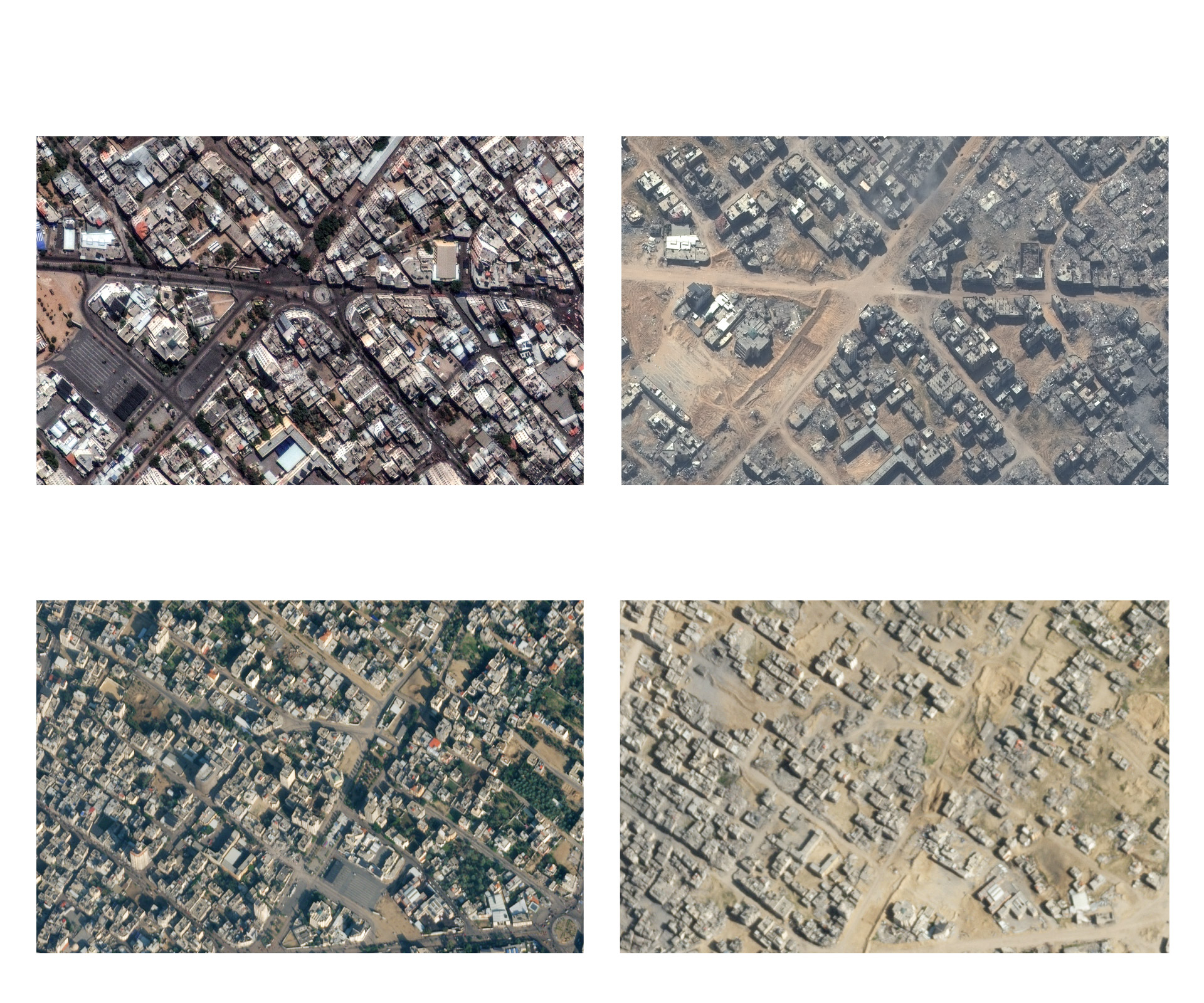
His house, he said, had “vanished.” In its place were piles of rebar and cement. Nothing was salvageable: The house, he estimated, had been hit by an airstrike and then bulldozed. Other houses had been burned.
On Sunday, the six-month anniversary of the attack on Israel on Oct. 7 and the start of the devastating war that followed, the Israel Defense Forces said in a statement that it was withdrawing all but one brigade from the south of Gaza, marking an apparent turning point in the conflict.
Yet for residents of Khan Younis making the journey home, this is no return to normalcy. More than 33,000 people in Gaza have been killed in the conflict so far, according to the Gaza Health Ministry, which does not distinguish between civilians and combatants but says the majority of the dead are women and children. Satellite imagery from the United Nations has found 12,710 buildings in the city have been destroyed, second only to Gaza City.

Sources: Damage analysis of Copernicus
Sentinel-1 satellite data by Corey Scher of CUNY
Graduate Center and Jamon Van Den Hoek of
Oregon State University, Microvvsoft Maps.

Sources: Damage analysis of Copernicus Sentinel-1 satellite
data by Corey Scher of CUNY Graduate Center and Jamon Van
Den Hoek of Oregon State University, Microsoft Maps.

Sources: Damage analysis of Copernicus Sentinel-1 satellite data by Corey Scher of CUNY
Graduate Center and Jamon Van Den Hoek of Oregon State University, Microsoft Maps.

TYPOGRAPHY RULES
– General type should start at 16px. Go up or down in major increments of 4 or minor increments of 2 from there.
– Type should be no smaller than 12px.
– If there are multiple graphics in a file with the same hierarchy, the headlines should be the same.
On desktop artboards (640 and above):
– Headlines should be 24px
– Any headline type over 24px should be reserved for special occasions and should be changed to Postoni.
For mobile art boards (384 and below):
– Headlines should be 20px
Sources: Damage analysis of Copernicus Sentinel-1 satellite data by Corey Scher of CUNY Graduate Center and Jamon Van Den Hoek of Oregon State
University, Microsoft Maps.
Gaza’s Civil Defense Ministry said Monday that it had found 28 decomposing bodies around Khan Younis so far.
Nasser Hospital, the main medical site in the city, was still standing, but barely, its interior devastated. Rubble and crushed, overturned cars and trucks lay strewn in the surrounding streets.
The humanitarian worker had borrowed his brother-in-law’s jeep to drive into Khan Younis from the coastal town of Mawassi on Sunday, where he, his wife and six children had fled last month after fearing that their previous place of refuge, Rafah, would be Israel’s next target.
He said that the scale of the damage had made navigation difficult. To reach his area, he stopped other cars and passersby to crowdsource the right routes to take. The old roads he had known so well were destroyed by airstrikes or blocked by rubble, he said. He took a circuitous path and occasionally found new quasi-roads forged by Israeli tanks.
When he arrived, his heart sank. “It was completely messed up,” he said of his neighborhood: “Not only demolished but distorted in a way that no one could recognize it.”

Source: Maxar Technologies

Source: Maxar Technologies

Source: Maxar Technologies

Source: Maxar Technologies
Khan Younis was home to roughly 400,000 people. It served as an economic center for southern Gaza and had a rich cultural history.
The city became swollen with displaced people after Israel warned those living in Gaza’s densely populated north to evacuate on Oct. 12, leading hundreds of thousands to heed the warning. Two weeks later, after pounding airstrikes in the north, Israel launched its ground invasion.
Khan Younis was significant to Israel’s military objectives. It was the birthplace of Yehiya Sinwar, the leader of Hamas in the Gaza Strip. Israeli officials had said that the city was a stronghold for Hamas, and suggested Sinwar was hiding in Khan Younis.
On Dec. 4, Israeli forces began pushing farther south into Gaza, telling the civilians who had fled to Khan Younis to now head on again, and most went to the southern border city of Rafah.
Roughly half of Gaza’s prewar population has been condensed into Rafah, surging the small city’s prewar population with tent cities. But even amid warnings of a potential Rafah offensive by the Israeli military — a plan Israeli Prime Minister Benjamin Netanyahu said in remarks Monday must proceed “in order to achieve victory” — some are too scared to return.
“We have truly lived the worst days of our lives” since the war started, said Muhammed Al-Atrash, a 44-year-old father of three from Khan Younis now living in a tent in Rafah. “We get everything through suffering. We depend on canned foods for our diet. We live in constant anxiety and fear.”
The military activity in Khan Younis has left the family home “unlivable,” Al-Atrash said Sunday. “The doors and windows were all broken. The walls are collapsing. We do not live in safety at all.”
The humanitarian worker said that traveling back to his home in Khan Younis caused considerable personal pain and he couldn’t bear to go back again.
“My kids and wife insisted to go today,” he said on Monday. “They asked me to accompany them, and I said no.”
He tried to prevent them from going. They hired a taxi anyway. “Nothing good can come out of it,” he said.
Jennifer Hassan and Lior Soroka contributed to this report.